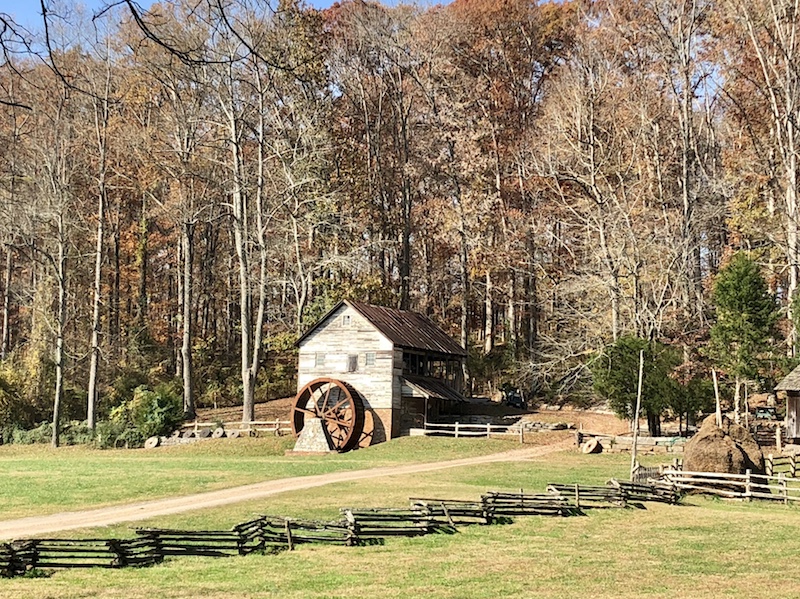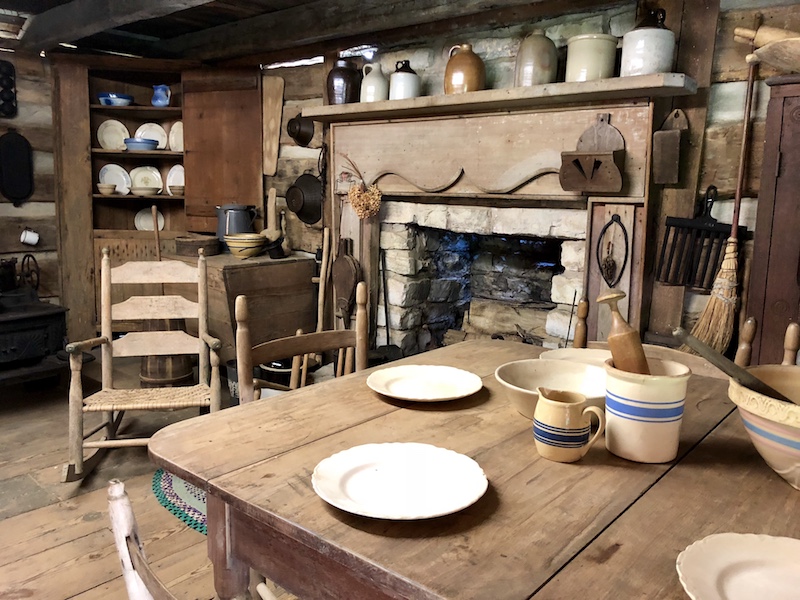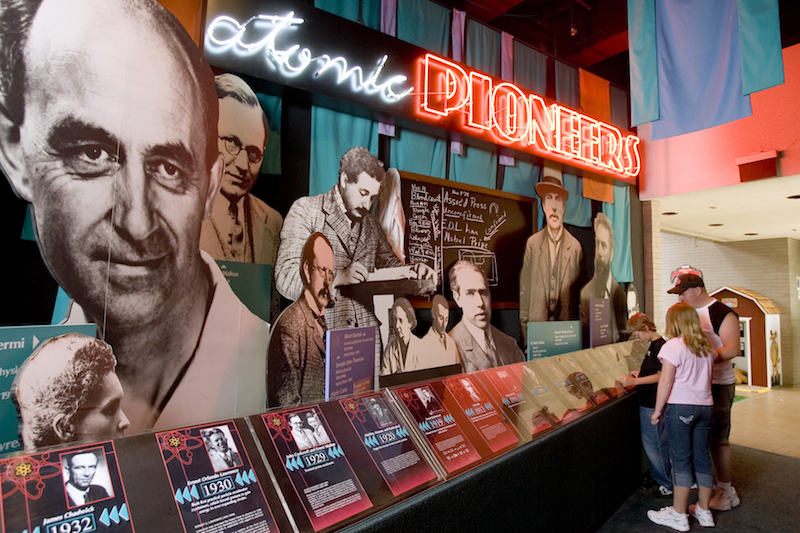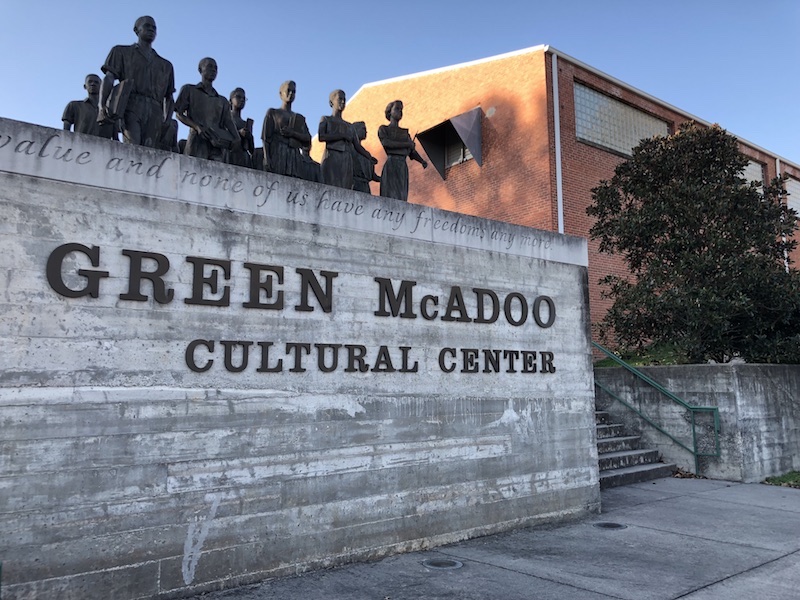From the Manhattan Project to coal mining and civil rights, Eastern Tennessee offers diverse and rich history lessons for families visiting the region. If you came with your family to visit Great Smoky Mountains National Park or Knoxville, stay an extra few days to explore the history of the area.
Table of Contents
Historical travel in Eastern Tennessee:

Museum of Appalachia:
This living history museum and farm is located near Oak Ridge in the town of Clinton, Tennessee, and is absolutely fantastic. It was created by local resident John Rice Irwin in 1969, with just one re-located Appalachian cabin and some artifacts. Now, it has dozens of buildings to tour, animals to see, and a wonderful ‘Hall of Fame’ museum, which houses historical exhibits, antiques, and artifacts from the area. Most exhibits feature ‘regular’ citizens, detailing their lives with as much reverence as one would expect to find of key historical figures. It’s very touching to walk through and read of these ‘ordinary’ lives that become extra-ordinary in the telling of their tales. Many of the buildings around the property have been re-constructed and reimagined with period furniture and touches, and many living history events take place here.

Admission is $18 for adults and $6-10 for kids (depending on age), with multiple discounts for various groups. Definitely eat in the restaurant here for lunch; it was among the best home-cooked meals of our stay in Tennessee. Allow for at least 2-3 hours. The farm is located at 2819 Andersonville Highway, Clinton.
Note: across the street form the Museum of Appalachia is the Appalachian Arts Craft Center, which features crafts, pottery and fiber craft products from local artists. The member artists of this co-op work in studios downstairs and sell their wares upstairs; if you’re looking for hand-crafted souvenirs from Appalachia, this is the place.
Oak Ridge:
Just 30 minutes from Knoxville, Oak Ridge is the once secret city that housed the Manhattan Project during WWII. Now a national historic park, families can tour Oak Ridge in two basic parts. Start at the American Museum of Science and Energy, where you can check in with the national park service and get a park passport stamp. Your admission here includes a three-hour bus tour of the surrounding sites (great to do with older kids), but if you don’t have that much time, you can learn a lot right at the museum. Watch the short video, then tour the exhibits showing the history of Oak Ridge, which housed 75,000 scientists and their families. The bottom part of the museum will take about an hour, then be sure to head upstairs to the outdoor area, where you can walk through an actual housing unit from Oak Ridge. Additional exhibits upstairs are almost exclusively hands-on science exhibits (of a children’s science museum variety). The bus tour takes visitors to some of the actual sites of labs and reactors, and of note: only US citizens can do this part.

Green McAdoo Culture Center:
Continue your history lesson in Clinton with a must-do stop at the Green McAdoo Culture Center. Clinton is the location where on August 27, 1956, twelve teenagers were the first to desegregate a state-supported high school in the South, and Bobby Cain was the first black student to graduate from a public (white) high school. This event took place several years before the better-known moment in history when Ruby Bridges desegregated a school in Little Rock, Arkansas, and yet is nearly forgotten by history. The culture center is changing that, with a wonderful yet small museum in the Green McAdoo school building, just up the road from one-time Clinton High School (still there today, as the current middle school).

The Green McAdoo school served for years as the segregated school for black students, up until the time of desegregation. The historical events that took place in Clinton in 1956 tell a story of bravery from the students, their families, the larger community, and the school. The museum sheds light on important though often hard-to-hear civil rights history during the Jim Crow era, as the town of Clinton was rocked by the events of the ‘Clinton 12’. This is a stop on the East Tennessee history tour for older kids and teens, who will best be able to understand the complicated history. It’s located at 101 School Street in Clinton.
Coal Creek Coal Mining Museum and Discovery Tour:
Finally, take yet another turn through Tennessee history at the Coal Creek Miners Museum in Rocky Top, Tennessee. This is a small but important museum that can be toured in just about 30 minutes. It details the history of coal mining in the area, which started in the 1800s and included the third-worst coal mining disaster in US history, as well as what was known as the Coal Creek War, in which miners formed a militia to try to stop the US government from using prison labor in the mines. It’s a fascinating, sad history, good for school-aged kids and older. After touring the museum, hit a few stops on the Coal Creek Discovery Tour in your car (you’ll get a map at the museum). Stops include locations of the mining camps, cemeteries, and hilltops where the US military used cannons against miners in the Coal Creek War. The locations are largely well-marked, and all are close by.
Do you have a historical stop to add to our East Tennessee history tour? Let us know in the comments!
Photo credit: Amy Whitley and Tennessee Department of Tourist Development





